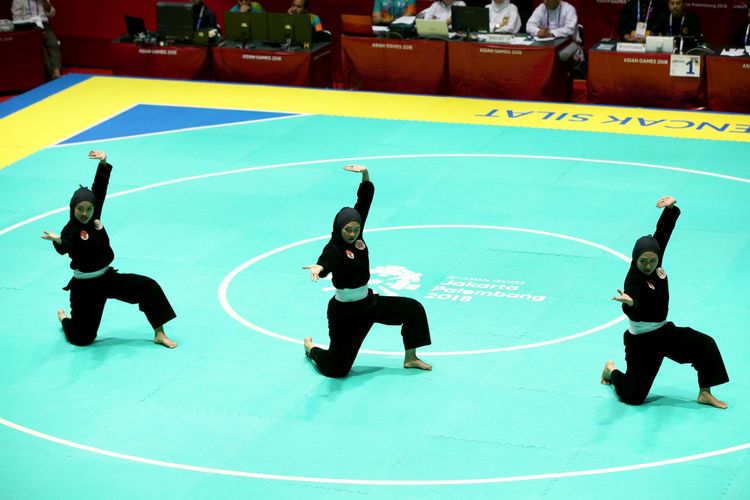Competitive Seni in Pencak Silat
In Pencak Silat, Seni refers to the artistic or performance aspect of the martial art. It emphasises graceful movements, precision, and expression, showcasing the beauty and cultural depth of Pencak Silat. Unlike the Tanding (combat) category, Seni is a non-contact discipline where practitioners perform a choreographed sequence of techniques, often accompanied by traditional music. In Pencak Silat competitions, the Seni category is judged based on factors like technique execution, rhythm, balance, power, expression, and overall performance. It is divided into three main subcategories.
For the official Seni Silat competition rules, click here to view the full guidelines.
Tunggal (Solo Performance)
In pencak silat competition, the Tunggal category refers to a solo performance where the athlete, known as a pesilat, presents a set sequence of movements called the jurus tunggal. This jurus is a standardised routine created by the International Pencak Silat Federation (PERSILAT) specifically for competition. It combines open-hand techniques, weapon techniques (a machete (Golok) and a long stick (Toya), and various fundamental elements such as stances, strikes, blocks, dodges, and kicks. The performance flows continuously, switching smoothly between unarmed and armed sections.


Regu (Team Performance)
In pencak silat competition, the Regu category refers to a team performance involving three athletes who perform a synchronised routine of pencak silat movements. Like Tunggal, the sequence is standardised and set by the International Pencak Silat Federation (PERSILAT) to ensure fairness across all competitors. The jurus regu emphasises synchronisation, consistency, and harmony among team members, requiring them to move in perfect unison through various stances, strikes, blocks, kicks, and dodges. Unlike Tunggal, no weapons are used in Regu; it is entirely performed with open-hand techniques.
Ganda (Choreographed Duel)
In pencak silat competition, the Ganda category is a choreographed mock combat performance between two athletes. Unlike Tunggal and Regu, which focus on set sequences, Ganda allows for more creativity, as the athletes create a fight scene that demonstrates pencak silat techniques in a dynamic and dramatic way. Although the action is scripted, it must appear realistic and convincing, showing a variety of attacks, defences, counters, throws, locks, and weapon techniques.


Solo Creative
Solo Creative in Pencak Silat is a category within the Seni (artistic) division that allows athletes to perform a choreographed routine expressing individual creativity and martial skill. Unlike forms like Tunggal, Solo Creative routines are not bound by fixed movements or sequences. Athletes design their own performances using a combination of Pencak Silat techniques—both empty-hand and with weapons—accompanied by dynamic music. Judging criteria include technique quality, synchronisation with music, creativity, expression, and overall performance impact. This category emphasises innovation while preserving the essence of Pencak Silat's martial roots.